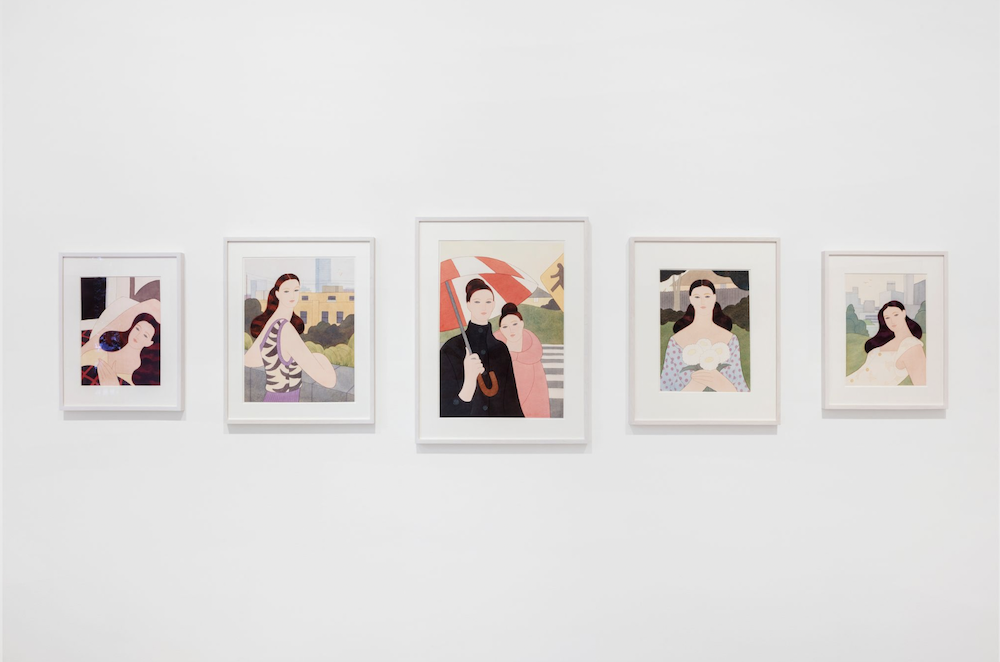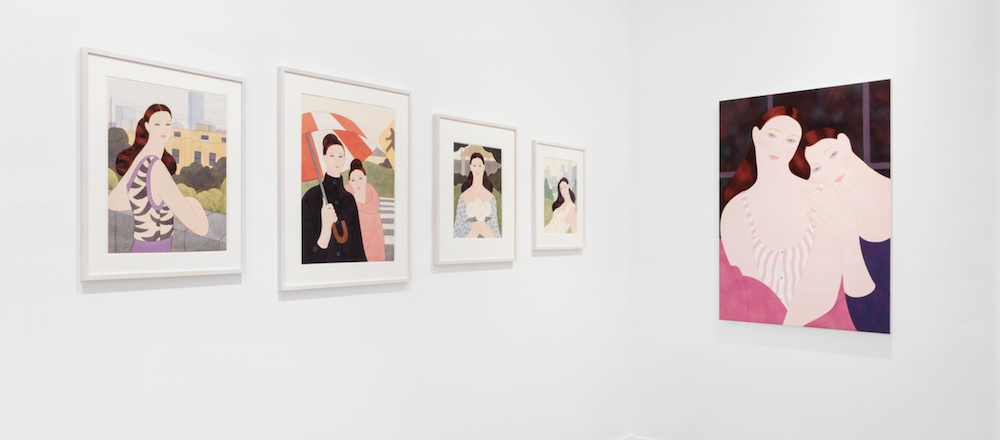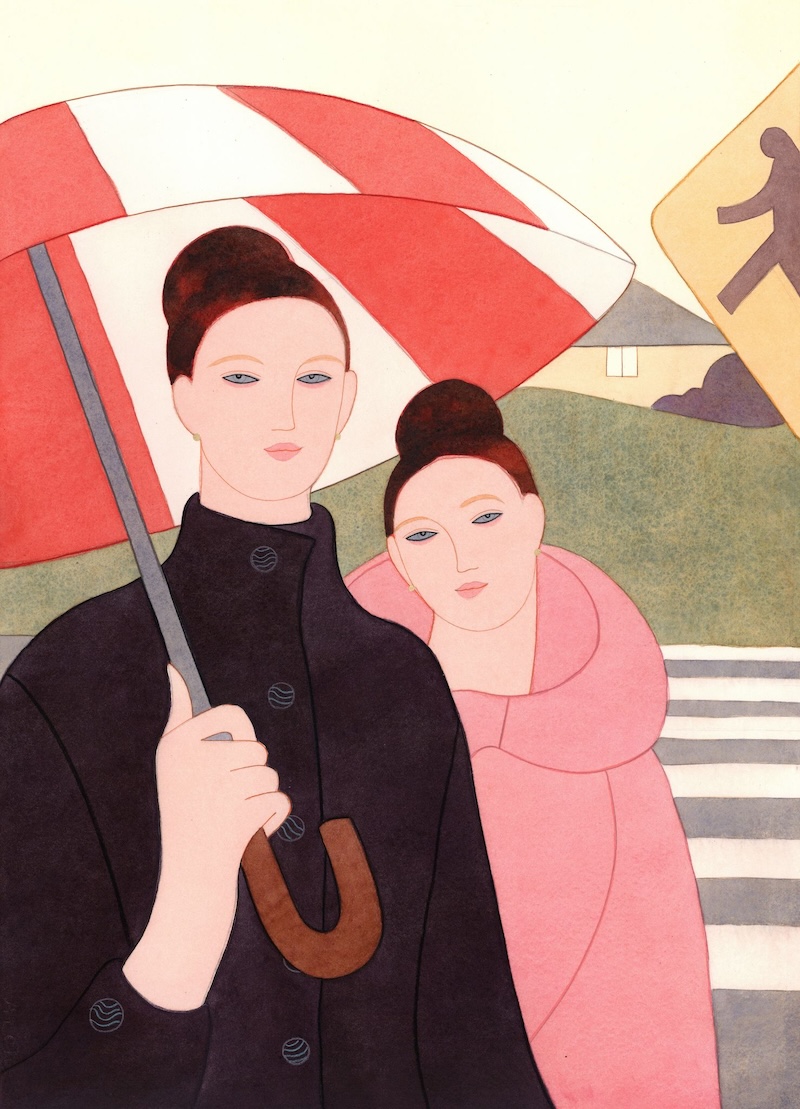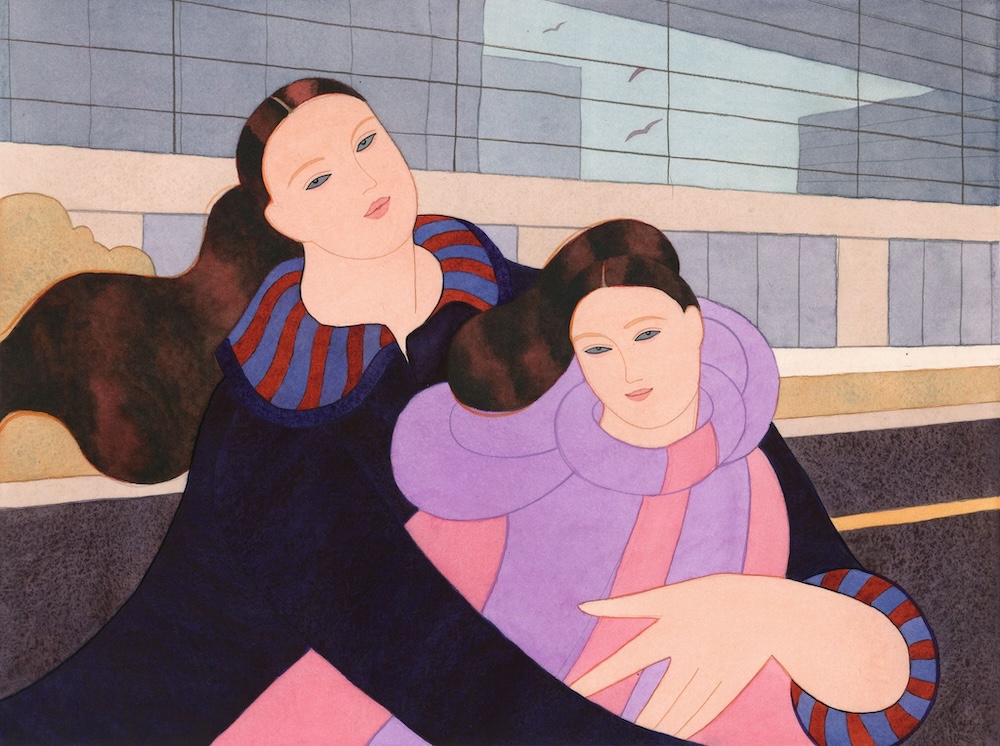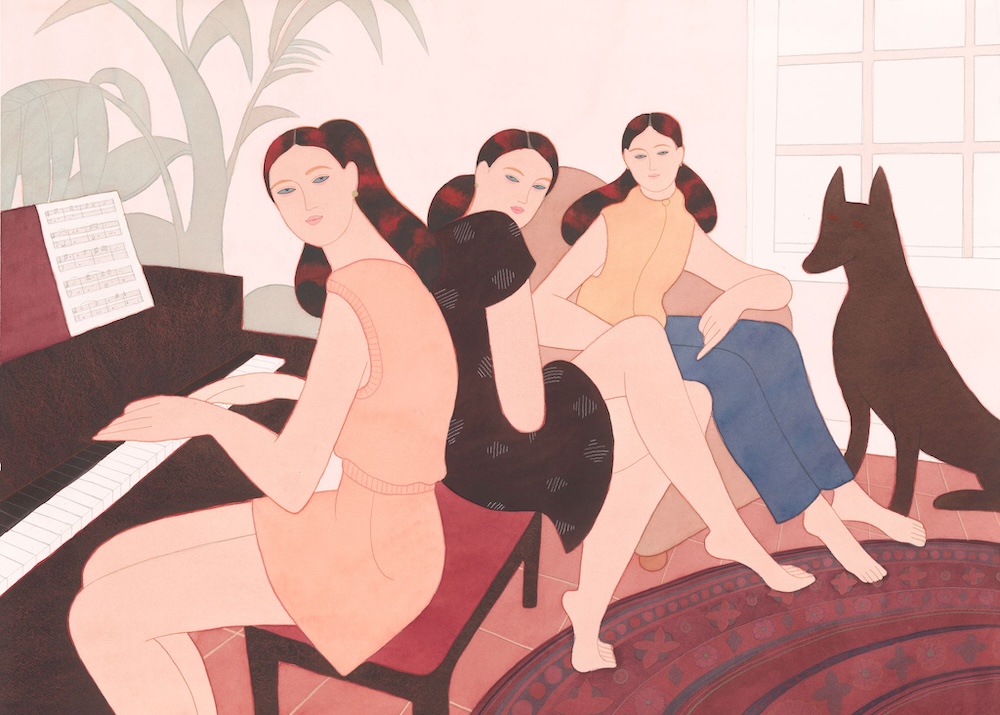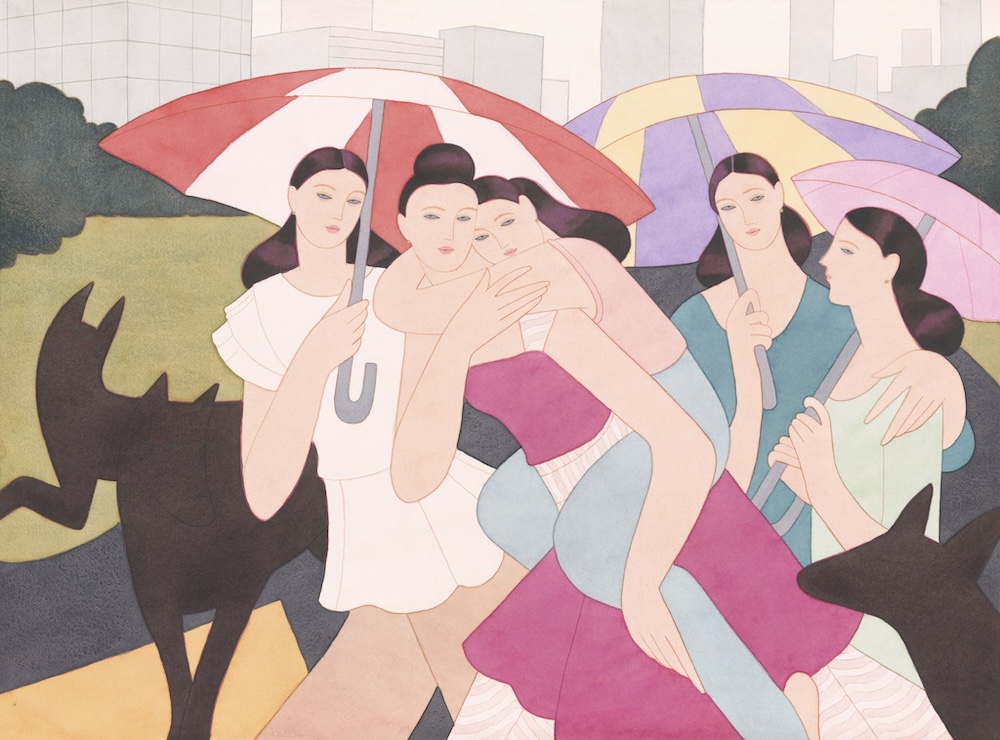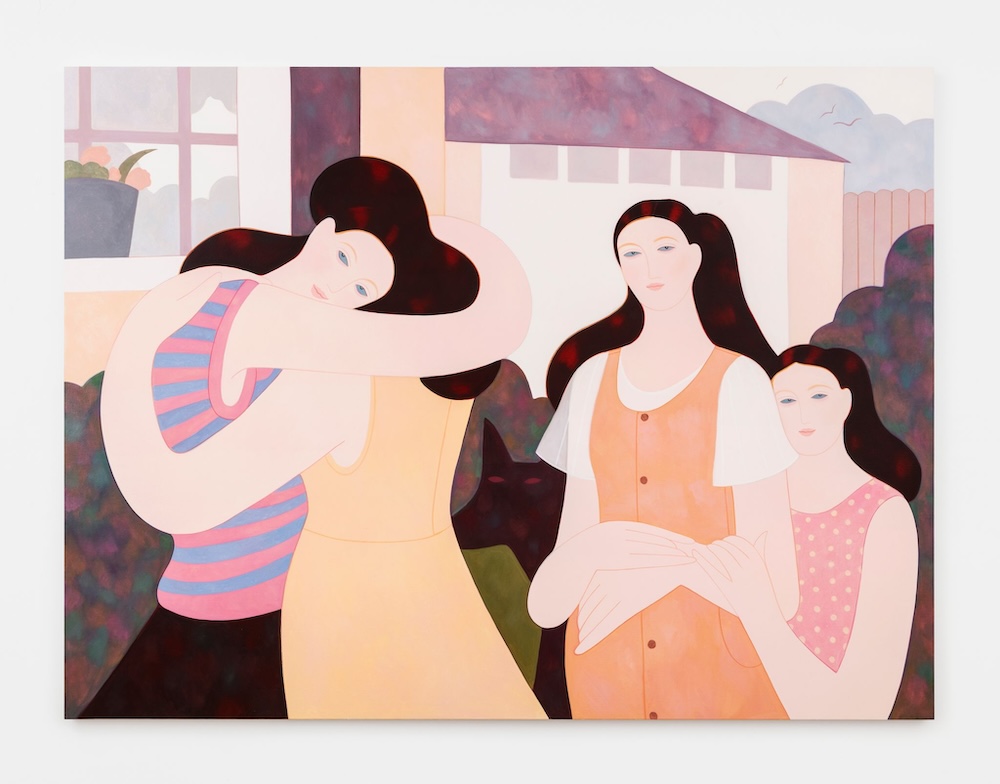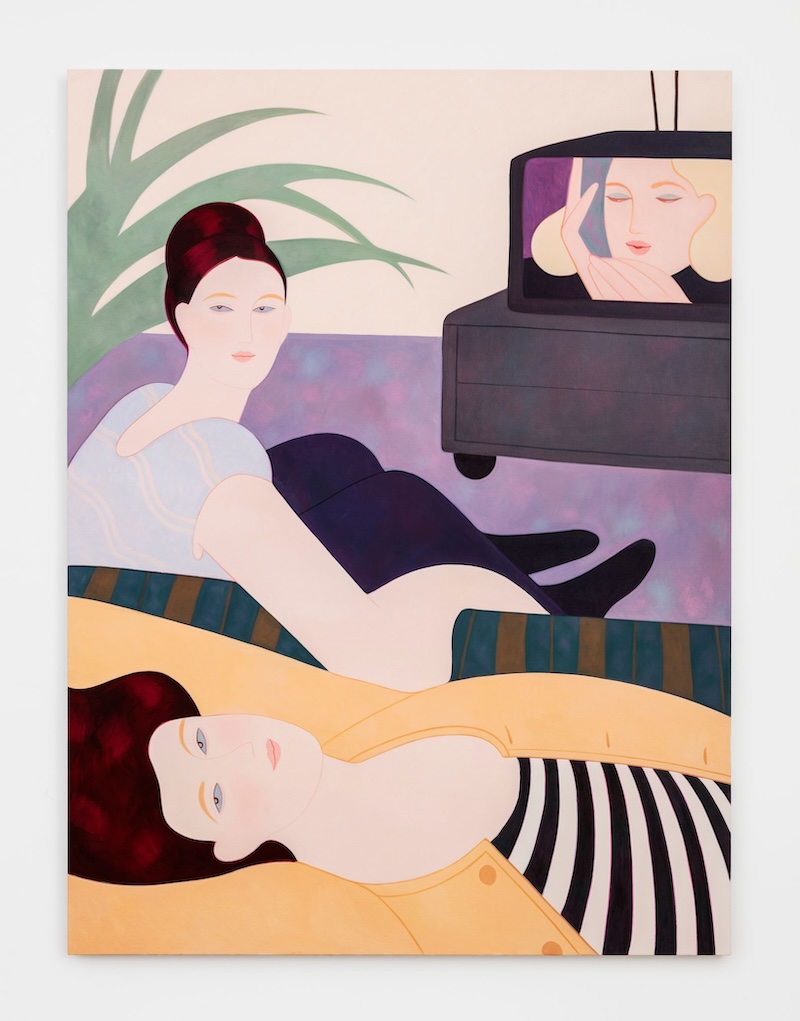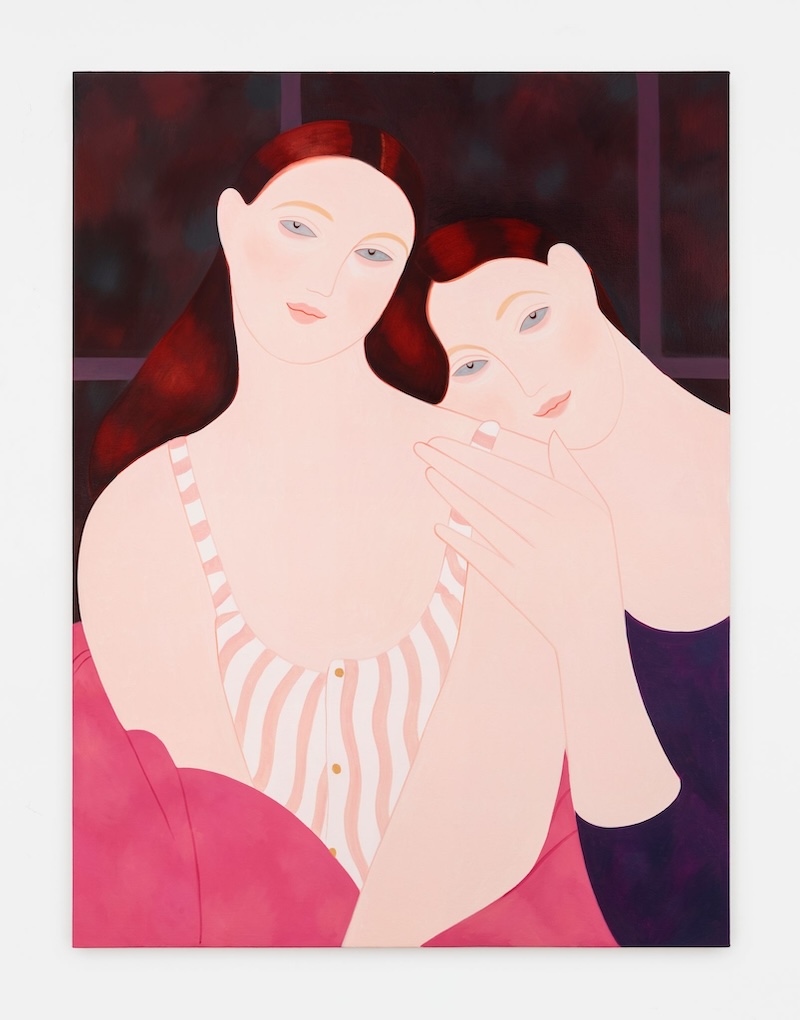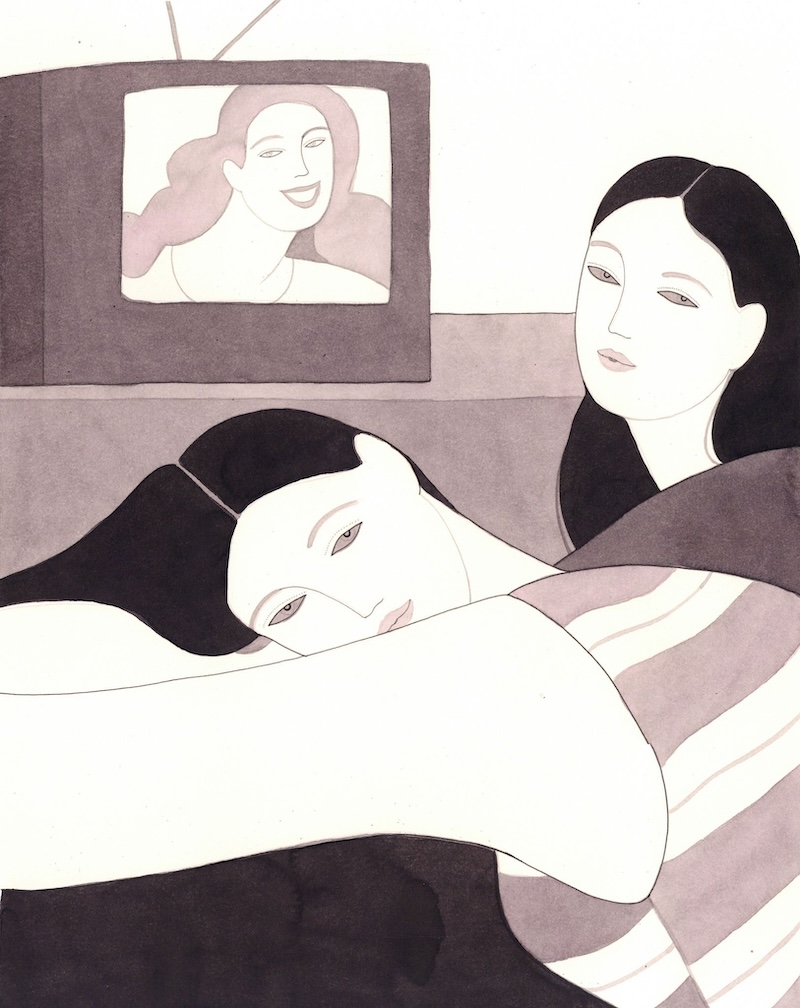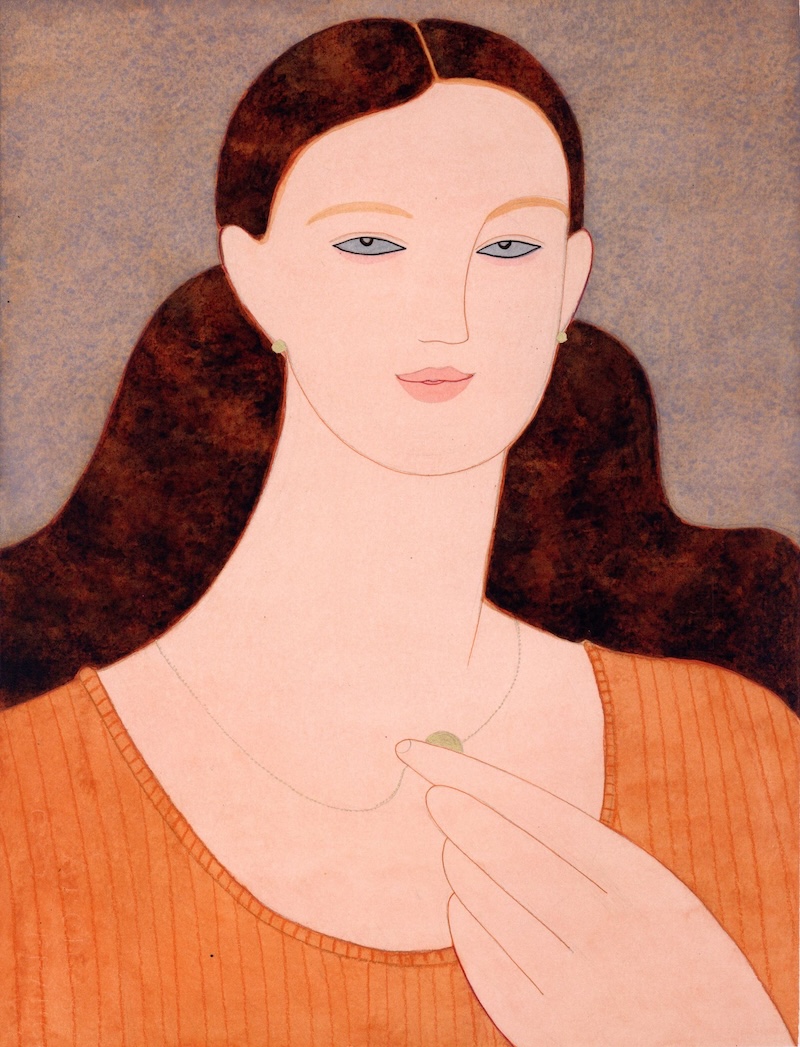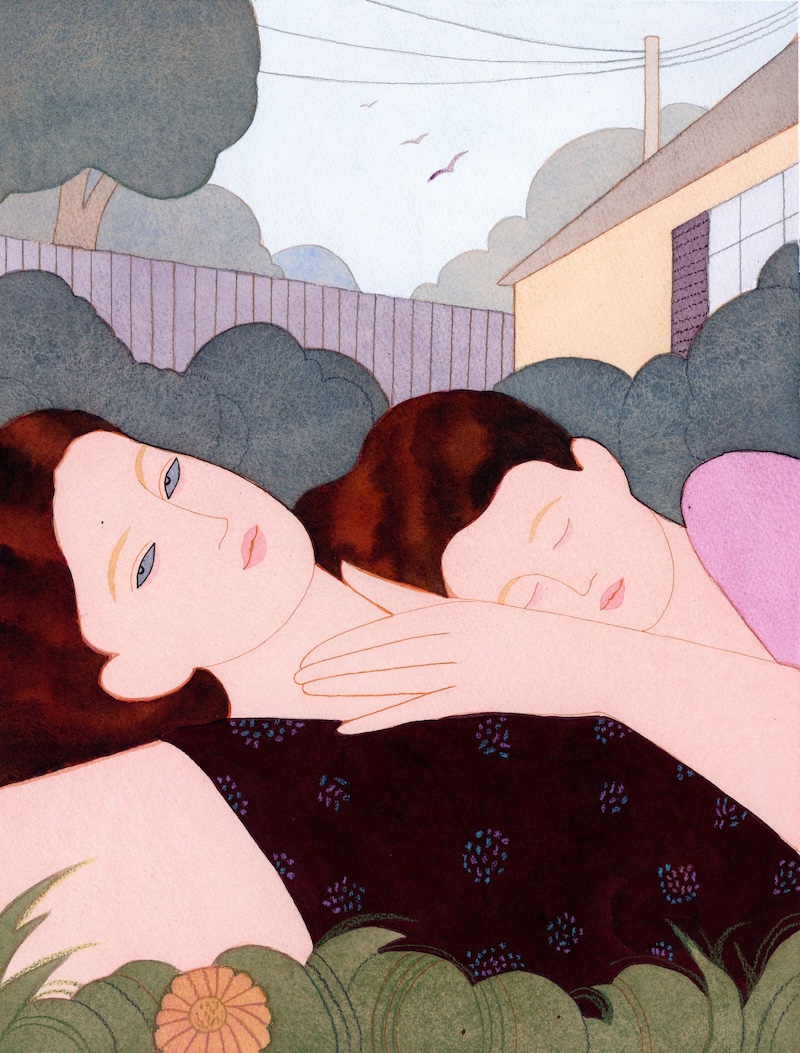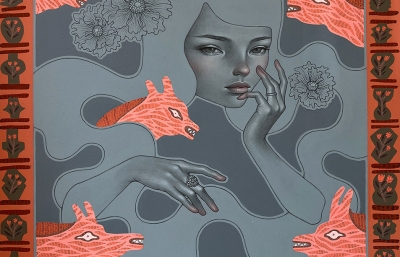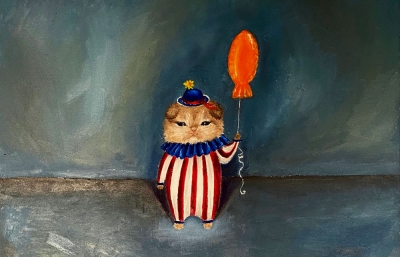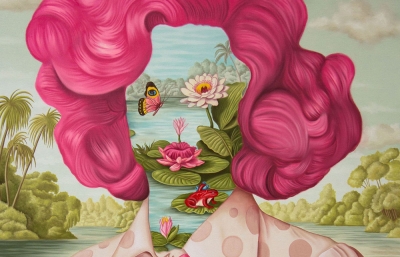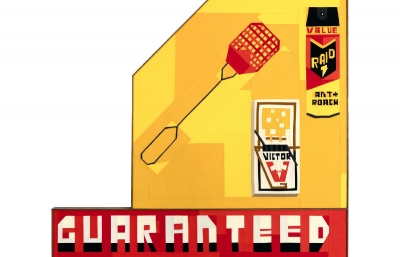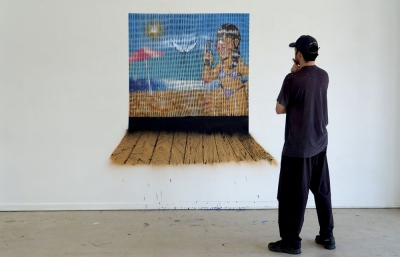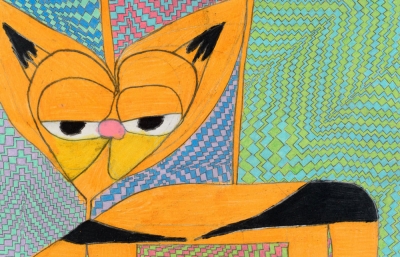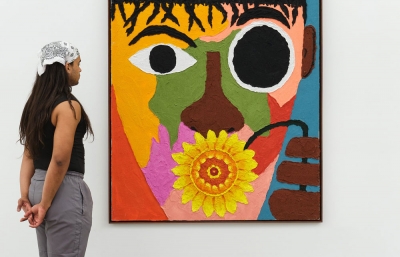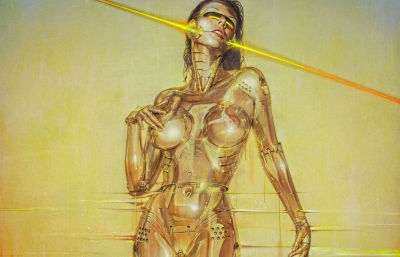Does Kelly Beeman paint from memory or just paint from a distance and is there a difference? I'll admit I have been a huge fan of Beeman's work over the years, as this incredibly vivid and yet arm's length depiction of suburbia, family, childhood, fashion, trauma all painted with an eloquent aesthetic of fantasy and perfection. Memories aren't perfect, and all of our coming of age stories, are, indeed, rarely ideal. In a contemporary culture of selfies and social media's ability to falsify the reality of our current condition, where a smile with friends at a Friday dinner could mask what is a turbulent time in one's life,
Beeman is going into a deeper psychological examination of what it is we can't leave behind no matter how hard we try; what is actually underneath that desire to mask reality. Life may look idyllic, undisturbed, and perhaps even perfect in both nature and in the homes, but look at each characters face and there is a sense of something forebodding or that we are intruding. I often feel like Beeman paints the intrusion of her own memories, as if as the director of her craft she is somehow making things unstable for her actors. That is the power here. These are the works of enigmatic characters in a turbulent world, cocooned in perfection but only as a painting. What Distant Cities at Perrotin Paris does is show that Beeman is a director of time, painting with an awareness of something overwhelming in the world that needs to be erased from the fantasy of her painted realm. And her utopia only gets better and better. —Evan Pricco


